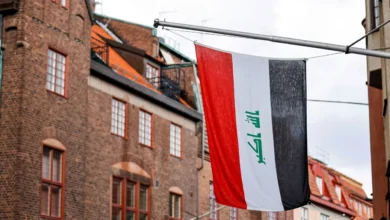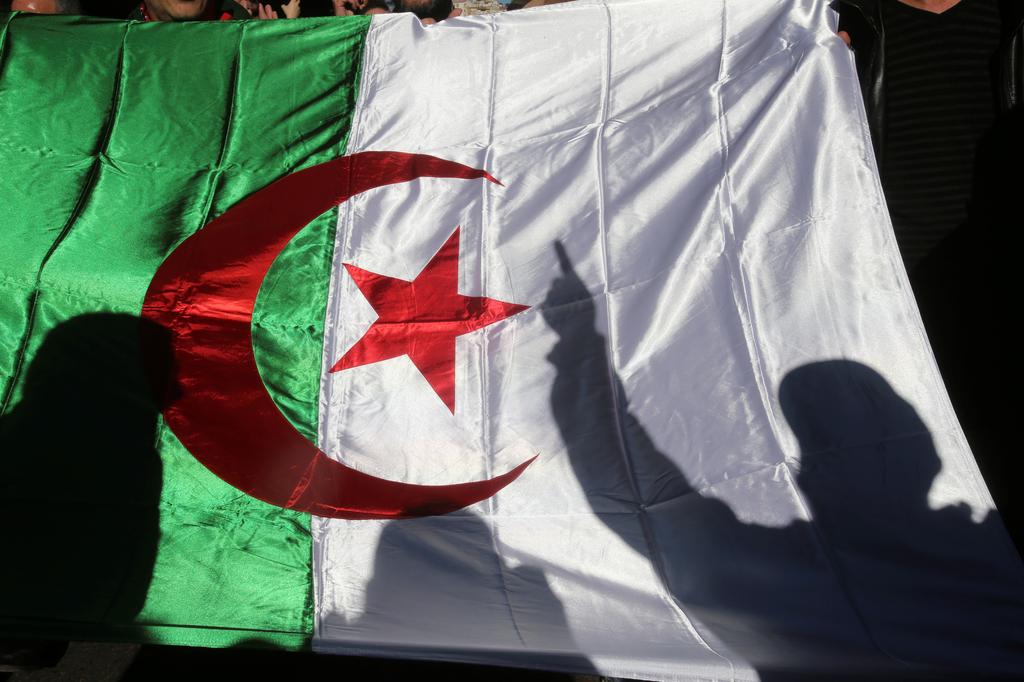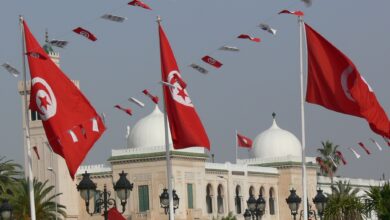Visitors should be glad to know that the Hiwar (Dialogue) group exhibition at Darb 1718 is not just another attempt at intercultural dialogue, a topic that has been exhausted in contemporary art exhibitions from or about the Middle East. The show, which was exhibited at Le Violon Bleu Gallery in Tunisia last May and is currently showing at the Darb 1718 arts center in Old Cairo, is aimed at locals. Because of this, the eight participating artists from Egypt, Iraq and Tunisia were free from often-limiting attempts at cultural representation and could focus on more personal and urgent dialogues.
Egyptian artist Moataz Nasr highlights the need for tolerance in “The Manifest and Un-Manifest,” an appliqué with the word al-houb (love) woven into a Sufi circular pattern. He also critiques passive attitudes in Egypt in "The Echo," a double-channel video projection inspired by the famous “Al-Ard” (The Land) movie.
The standardization of cultural and artistic production in an increasingly integrated global economy is discussed by Egyptian artist Mohamed Allam in a Skype video-call, which he titled “Recipe.” Iraqi artist Adel Abidin continued his sarcastic reflections on the Iraqi situation in his video piece “Ping-Pong,” while Sama Alshaibi and Dena Al-Adeeb reflected on their experiences as Iraqis living outside of their home country since the Iraqi-Iranian war in the photographic series “Baghdadi Mem/War." And in her poster, “The Glasses,” Egyptian artist Hager Masoud explores the hidden motives behind people’s actions through humorous stories about a mysterious pair of glasses.
Some works, however, are less successful due to the use of exhausted visual imagery. In “Tragedy,” Tunisian artist Meriam Bouderbala creates a web installation out of crime scene tape in order to critique existing national borders and barriers. Egyptian artist Noha Hesham visualizes the idea of paradise in “Exit” by drawing locked doors directly onto the walls of the gallery space. In “Un Chagrin D’amour” (Heartache), an installation by Tunisian artist Dora Dhouib, the artist projects a video of herself weeping as a therapeutic tool to overcome heartbreak and loneliness.
Among the strongest works, “The Echo” references a famous scene from the 1969 movie “Al-Ard” (The Land). In it, Abou Swelem (played by Egyptian star Mahmoud al-Miligy) berates his fellow villagers for their submissiveness to the unjust rule of the landlord and local authorities. The events go back to 1933 when Egypt was still a monarchy under British colonial rule, but the passive attitude resonates with the low national morale in 1969, two years after Egypt’s defeat in the 1967 war against Israel. “The Echo” shows a 2003 impromptu reenactment of the scene in a bustling downtown coffee shop by Egyptian storyteller Cherine al-Ansary. The words of al-Miligy and al-Ansary echo one another and the reactions of the crowds in both the movie and coffee shop emphasize that little has changed over the past eighty years and revolutionary thoughts have been nothing but words.
In “Recipe,” another standout, Allam shares a private Skype video call he had with a friend, artist Karim Lotfy. The title ironically refers to specific production modes and themes for success in the contemporary Middle Eastern art scene, such as referencing the civil war in Lebanon. During the conversation, the artists question the role art plays in Egypt. In the West, contemporary art has been inspired by social and cultural movements. In Egypt, however, many works simply emulate the forms and themes of Western contemporary art and have little impact or outreach within Egypt. Although “Recipe” is primarily a conversation about contemporary art, it touches upon issues of cultural production in relation to cultural values and socioeconomic conditions through the experiences of two young artists living in Cairo.
Abidin’s “Ping-Pong” is a looped video of an intense game of table tennis. The two opponents play fiercely in deafening silence and the scores are updated by an invisible referee. The body of a nude young woman is used as a net. Neither the players nor the referee seem to notice the young woman, who winces in pain every time the ball hits her bruised body. The piece seems to shed light on the perpetual conflicts over political, economic and religious dominance that have afflicted Iraq over the past few decades and, more importantly, the often overlooked collateral damage.
Abidin has continuously used sarcasm in works that discuss the Iraqi situation. In 2007, he presented his “Holidays in Baghdad” installation at the Venice Biennale. In the piece, a fictitious travel agency, Abidin Travels, offers its clients tips and tricks to enjoy their visit to Baghdad. There is no need to visit national museums as they have been looted and visitors should mind their step while walking on the pavement as they might step on hidden landmines, advised the travel agency.
Hiwar seems incoherent at first, bringing together a diverse body of works. However, by revisiting the basic idea of dialogue as a conversational exchange between two or more people, it successfully draws in the audience as active participants in the conversation.
Hiwar is exhibited at Darb 1718 Contemporary Art and Culture Center from 25 September to 30 October 2010.
Kasr al-Sham3 Street, al-Fakhareen, Old Cairo
The gallery is open Saturdays through Thursdays from 10AM to 10 PM and from 4PM to 10PM on Fridays. The gallery is closed on Thursdays.




